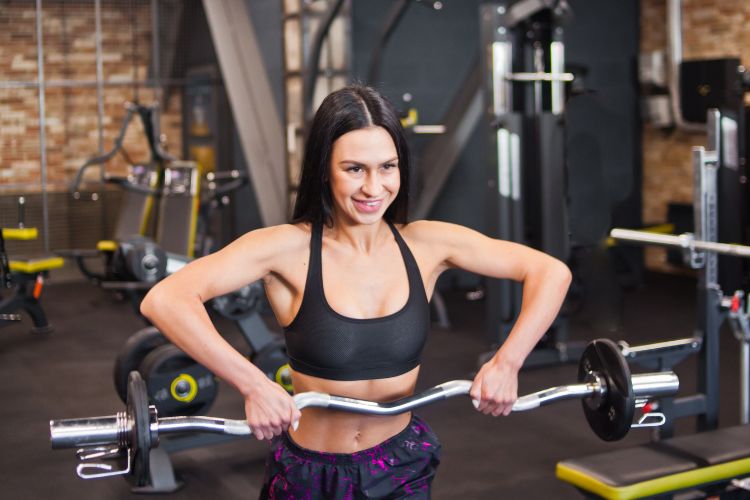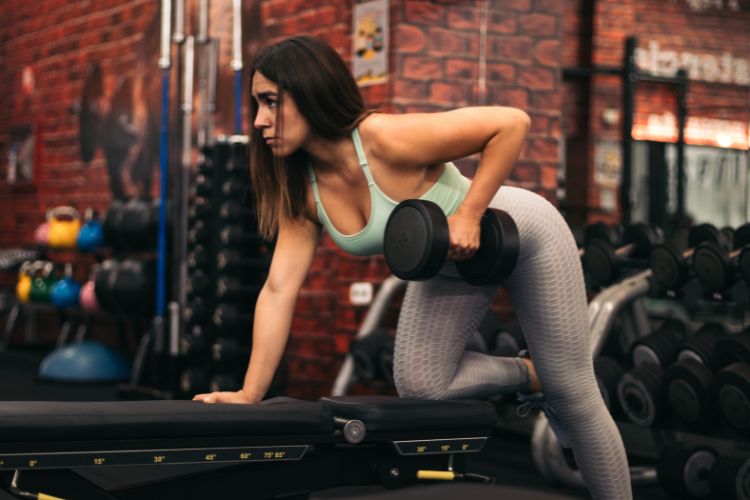Sign up for workout ideas, training advice, reviews of the latest gear and more.




Strength training is a valuable component of any fitness routine, and squats are a fantastic exercise to include in your program. While squats may seem intimidating at first, they offer numerous benefits for women, including improved strength, muscle tone, and overall fitness. In this blog post, we’ll explore the importance of squats in a women’s strength training program and provide a comprehensive squat program tailored specifically for women.
Squats primarily target the muscles in your lower body, including your quadriceps, hamstrings, glutes, and calves. For women, developing strong leg muscles can be especially beneficial, as it enhances functional strength and can make daily activities easier.
A proper squat requires you to engage your core muscles to maintain balance and stability. Over time, this can lead to improved core strength, which is essential for maintaining good posture and preventing back pain.
Strength training exercises like squats help increase muscle mass, which, in turn, can boost your metabolism. A higher metabolic rate means your body burns more calories at rest, making it easier to manage your weight.
Women are more susceptible to osteoporosis than men, making it crucial to engage in weight-bearing exercises that promote bone health. Squats are one such exercise, as they put stress on your bones, which encourages them to become denser and stronger.
Whether you’re an athlete or simply enjoy recreational sports, squats can enhance your performance by improving your speed, power, and agility. Strong leg muscles are essential for activities like running, jumping, and even dancing.
Now that we understand the benefits of squats, let’s dive into creating a comprehensive squat program designed specifically for women. This program can help you build strength, tone your muscles, and achieve your fitness goals.
If you’re new to squats or strength training in general, it’s essential to start with bodyweight squats to learn proper form and build a solid foundation. Here’s how to perform a bodyweight squat:
Instructions: Squat Program For Strength
Once you’ve mastered bodyweight squats and can perform them with proper form, it’s time to add some resistance. You can use various tools like dumbbells, kettlebells, or a barbell to increase the intensity of your squats. Start with lighter weights and gradually increase as you become more comfortable.
Instructions for Dumbbell Squats:
Barbell squats are an excellent choice for women looking to build significant lower-body strength. However, these require access to a squat rack or power rack.
Instructions for Barbell Squats:
To keep your squat program exciting and target different muscle groups, consider incorporating squat variations into your routine. Here are a few to try:
a. Goblet Squats:
Hold a dumbbell or kettlebell close to your chest while performing squats. This variation places more emphasis on your core and upper body.
b. Bulgarian Split Squats:
Stand a few feet away from a bench or elevated surface, with one foot resting on it behind you. Perform squats with one leg at a time to isolate each leg’s strength.
c. Sumo Squats: Squat Program For Strength
Widen your stance significantly and turn your toes outward. This variation places more emphasis on the inner thighs and glutes.
d. Box Squats:
Use a bench or box to sit back onto during your squat. This helps with depth and can be beneficial for those with mobility limitations.
For an effective squat program, it’s essential to have a structured routine. Here’s a sample weekly program for women looking to build strength through squats:
Day 1: Bodyweight Squats (3 sets of 10-12 reps)
2: Dumbbell Squats (3 sets of 8-10 reps)
3: Rest or Active Recovery
4: Barbell Squats (3 sets of 6-8 reps)
5: Squat Variations (3 sets of 8-10 reps each)
6: Rest or Active Recovery: Squat Program For Strength
7: Rest
Remember to warm up before each squat session with some dynamic stretches and cool down with static stretches afterward. Additionally, always prioritize proper form over heavy weights to prevent injuries.
To ensure you’re making progress in your squat program, consider tracking your performance. Keep a record of the weight you use, the number of sets and reps completed, and how the exercises feel. Over time, you should see improvements in strength, endurance, and muscle tone.
Incorporating squats into your strength training program can be highly beneficial for women. Not only do they help build stronger legs and a more stable core, but they also contribute to improved overall fitness and bone health. By following a structured squat program, including variations, and tracking your progress, you can achieve your strength and fitness goals while reaping the many rewards of squats. So, lace up your workout shoes, hit the gym, and start squatting your way to a stronger, healthier you.
Stay up to date on the latest women’s health, fitness and lifestyle trends and tips.